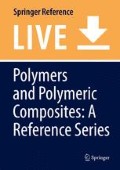Abstract
Environmental issues, such as life cycle impact and sustainability, are becoming important concerns for most industrial activities. Because of their scale of operation, composite materials are particularly affected, and this is filtering down to their major components, such as fillers.
In defense of using fillers at all, it has been shown that at least in some cases, replacing part of a synthetic polymer by fillers can reduce the environmental impact of a composite. While this is true, more could be done, and the main thrusts are for recycling and the use of renewables. The industry recognizes this; but, despite significant commercial activity, there are difficult obstacles to overcome and only limited success has been achieved so far. Recovery and recycling of fillers themselves is hampered by the low cost of many virgin products and has made little headway. Recycling of waste products from other industries has also made little progress, often due to competition from more valuable alternative applications for the wastes.
More progress has been made where the composite itself is recycled, examples being talc/polyolefin composites in automotive applications. This is much harder to accomplish in cross-linked polymers (thermosets and elastomers), which are inherently more difficult to recycle. The majority of fillers are currently from nonrenewable (although often vast) mineral resources. The exceptions are natural fibers, such as wood, cotton, and flax, and these are considered to be more sustainable.
Despite much effort from the tire companies on products such as starch, renewable particulate fillers have so far made little progress. It has, however, been demonstrated that carbon black can be made from biomass rather than petroleum oil, and this may develop as a significant commercial option in the future.
Despite the difficulties, pressure on the major volume products is only going to increase and we can expect more recycling and use of renewables in the future. This will mainly be in large volume products used in applications such as vehicles.
References
Aysawarya EP et al (2012) Rice husk ash, a valuable resource for HDPE. Mater Des 41:1–7
Bhuiyan MW, Mojumdar MRR, Hasan AKM (2011) An improved method to generate electricity and precipitated silica from rice husk: perspective Bangladesh. Int J Environ Sci Develop 2(4), pp 299–305
Chaudhary DS et al (2004) Recycling rice hull ash: a filler material for polymeric composites? Adv Polym Technol 23(2):147–155
Clemons CM (2010) Chapter 15, wood flour. In: Xanthos M (ed) Functional fillers for plastics, 2nd edn. Wiley-VCH, Weinheim, pp 269–290
Demoura Estevao LR et al (2005) Spent oil refinery catalyst: a synergistic agent in intumescent formulations for polyethylenic materials. In: Le Bras M, Wilkie CA, Bourbigot S, DuQuesne S, Jama C (eds) Fire retardancy of polymers new applications of mineral fillers. Royal Society of Chemistry, Cambridge, UK pp 313–326. ISBN 0-85404-582-1
Ghosh R, Bhattacherjee S (2013) A review study on precipitated silica and activated carbon from rice husk. J Chem Eng Process Technol 4:4. doi:10.4172/2157-7048.1000156
Haxo HE, Mehta PK (1975) Ground rice-hull ash as a filler for rubber. Rubber chemistry and technology: 48(2):pp. 271–288. doi: http://dx.doi.org/10.5254/1.3547453
Lin N, Huang J, Chang PR, Anderson DP, Yu J (2011) Preparation, modification, and application of starch nanocrystals in nanomaterials: a review. J Nanomater 2011:13 pages. Article ID 573687. doi:10.1155/2011/573687
Mainka H, Laue M, Cherif C, Herrmann AS (2015) Lignin powder as a filler for thermoplastic lightweight design components. ATZ worldwide eMagazines issue no: 2015-03, 0312015, vol 117
Mariano M, Kissi NE, Dufresne A (2014) Cellulose nanocrystals and related nanocomposites: review of some properties and challenges. J Polym Sci Part B Poly Phys 52(12):791–806
Norris CJ, Bennett M (2014) Factors controlling the in-rubber performance of pyrolysis chars. Paper presented at RubberCon 2014, Manchester, May 2014, ISBN 1-86125-176-9
Srilathakutty R et al (2002) Rice hull ash as a filler in microcellular soles. Int J Environ Stud 59(1):133–142
Author information
Authors and Affiliations
Corresponding author
Editor information
Editors and Affiliations
Rights and permissions
Copyright information
© 2016 Springer-Verlag Berlin Heidelberg
About this entry
Cite this entry
Rothon, R. (2016). Sustainable and Recycled Particulate Fillers. In: Palsule, S. (eds) Polymers and Polymeric Composites: A Reference Series. Springer, Berlin, Heidelberg. https://doi.org/10.1007/978-3-642-37179-0_21-1
Download citation
DOI: https://doi.org/10.1007/978-3-642-37179-0_21-1
Received:
Accepted:
Published:
Publisher Name: Springer, Berlin, Heidelberg
Online ISBN: 978-3-642-37179-0
eBook Packages: Springer Reference Chemistry and Mat. ScienceReference Module Physical and Materials ScienceReference Module Chemistry, Materials and Physics

